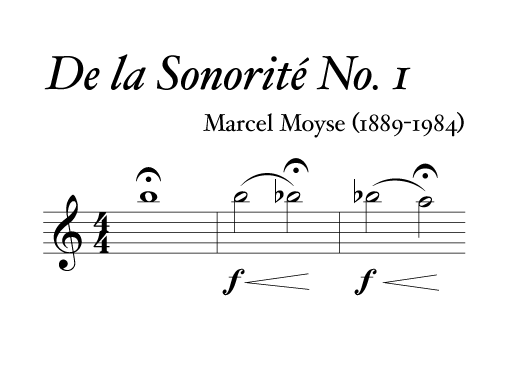Basically, at some point we all want more – more dynamic and expressive contrast, more colours in our sound. While the flute is super-easy to get reasonably good at, after a while in terms of expressive range, it often pales in comparison to other instruments.
Marcel Moyse confronted this hard truth back in 1934 when he wrote his book, De la Sonorité (About Sound) and in which he outlined a methodical way of developing a bigger, more expressive sound.

You continue the exercise illustrated here all the way down to low C’ or B’, then back up the scale to at least C””. The principle is simple and remains the same:
- Make the most beautiful, brassy, bodacious and bold sound that you have ever made on B – no matter how long it takes
- Take that sound and move it to Bb – only a semitone away
- Repeat this all the way down the scale – learning as you go all the little subtle changes of lip/mouth shape you have to do to make up for the inadequacies of the modern flute scale.
Everyone has to do this exercise at some point. There is no way around it, you must go through it. “Most beautiful” should gradually (over weeks and months) get better – more lustrous, darker, more powerful.
Flute players like James Galway and Michael Martin Kofler show the extreme end of this process in their relentless, powerful and lustrous tone.
Some of the biggest things I find to really help this process along are:
- Intense listening to the great flutists out there – there are a billion Galway recordings to listen to for example. All are fine examples to copy.
- Close your eyes while you do this – you need all your brain power focused on feelings and sound when you do this. If your eyes are open, you’re just busy distracting yourself with your visual sense – which is worse that useless here.
- Imaginative visualisation of the shape of your mouth/embouchure can really help encapsulate changes you’re trying to make.
- Running, swimming or rowing to really expand your lung and give you capacity to experiment and just blow harder for longer.
- The fast way is the slow way. The slower you go and the more you persist on tough notes, the faster the overall progress you’ll achieve.